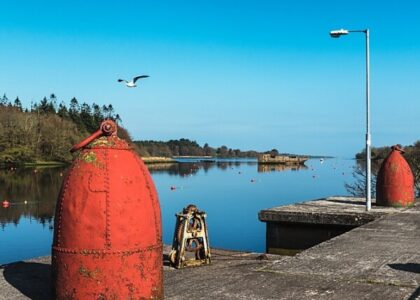Welcome to Tustin, a city with roots that stretch back to the days of Spanish land grants and the Californian Gold Rush. Nestled in the heart of Orange County, Tustin has played a significant role in the region’s development, both agriculturally and industrially.
Tustin’s story begins in the early 19th century, when it was part of a vast Spanish land grant. The area we now know as Tustin was under the jurisdiction of the Mexican government until the mid-1800s. The city itself was founded by Columbus Tustin, a carriage maker from Northern California, who purchased 1,300 acres of land in 1868. Columbus Tustin envisioned a prosperous town, and though his initial plans faced challenges, his dream eventually became a reality.
During the late 1800s and early 1900s, Tustin thrived as an agricultural community. The fertile land was ideal for growing oranges, apricots, and walnuts. This agricultural boom was further supported by the arrival of the Southern Pacific Railroad, which connected Tustin to larger markets and facilitated the transport of its produce.
One of the most notable historical events in Tustin’s story is its involvement during World War II. The U.S. Navy constructed a massive airship base in Tustin in 1942, known as the Marine Corps Air Station Tustin. The base featured two of the largest wooden structures ever built and was used for blimp operations during the war. These hangars remain a distinctive landmark of the city and serve as a reminder of Tustin’s contribution to the war effort.
As the years passed, Tustin evolved from its agricultural roots to become a thriving suburban city. The post-war era brought significant development, with residential neighborhoods sprouting and the population increasing steadily. This growth was accompanied by the development of commercial districts and infrastructure, transforming Tustin into a modern city.
Notable figures have also graced Tustin with their presence. For instance, during the 1970s, John Wayne, the legendary actor, was a frequent visitor. His presence added a touch of Hollywood glamour to the city.
Today, Tustin is known for its charming historic district, which preserves the architectural heritage of the city’s early days. Visitors can stroll down tree-lined streets and admire historic homes that echo the past. The city also boasts a vibrant cultural scene, with numerous community events and festivals celebrating its diverse heritage.
In the broader historical context, Tustin’s evolution from a small agricultural community to a bustling suburban city mirrors the growth of Southern California itself. It stands as a testament to the resilience and vision of its founders and residents.
As you explore Tustin today, you’ll find a city that embraces its rich history while looking toward the future. Whether you’re visiting its historic landmarks or enjoying its modern amenities, Tustin offers a unique glimpse into the tapestry of Californian history.





